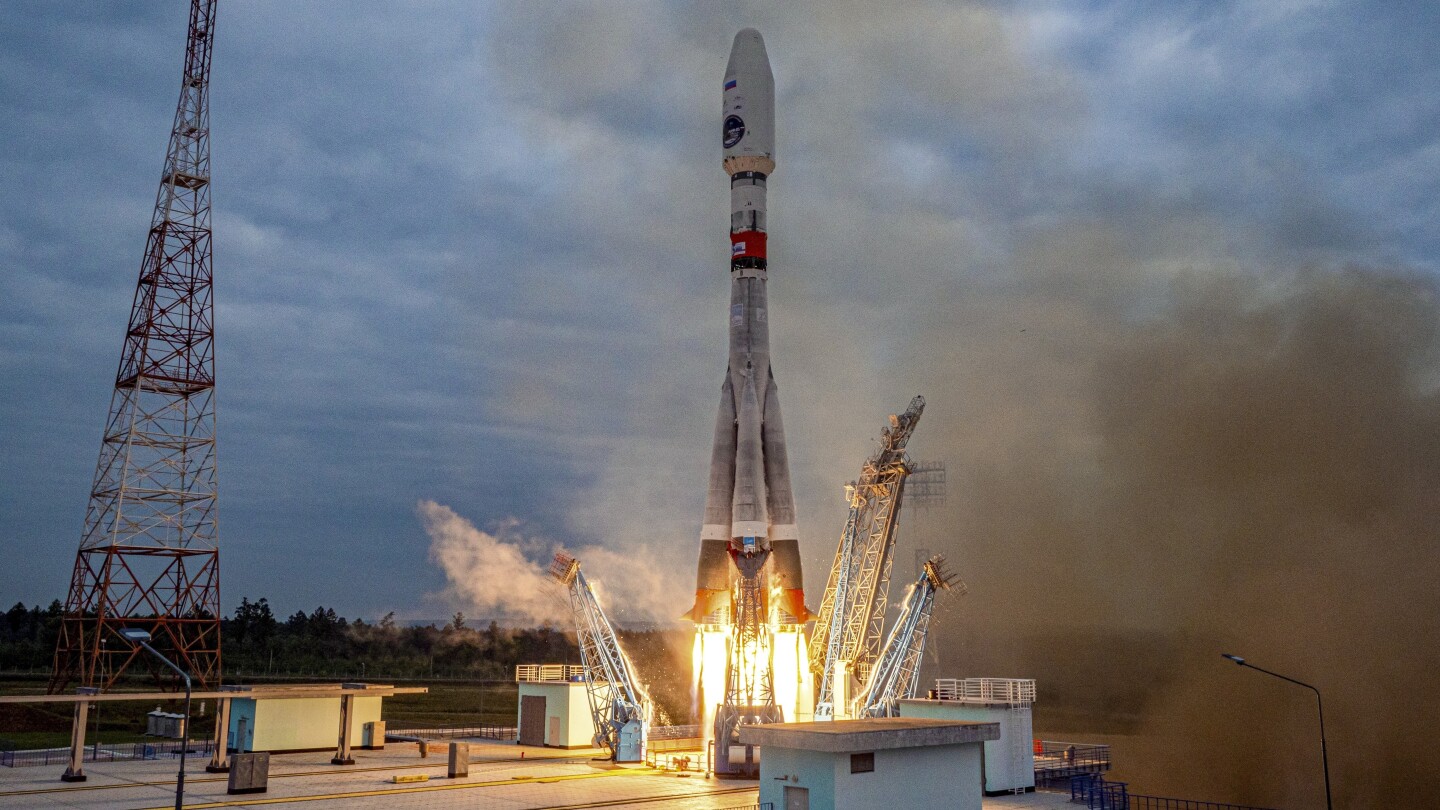A An ambitious but failed attempt Russia’s return to the moon after nearly half a century has exposed the massive challenges Moscow faces A once-proud space program.
The destruction of the robotic Luna-25 probe that crashed into the moon’s surface over the weekend reflects local problems that have rocked the Russian space industry since the 1991 collapse of the Soviet Union. Post-Soviet industrial decline included the loss of key technologies, a crushing impact. Recent Western sanctionsA massive brain drain and rampant corruption.
Yuri Borisov, head of the state-controlled space agency Roscosmos, attributed the failure to a lack of expertise due to a long hiatus in lunar exploration following the Soviet Union’s last trip to the moon in 1976.
“The invaluable experience gained by our ancestors in the 1960s-70s was effectively lost,” said Borisov. “The link between generations has been severed.”
Although the Soviet Union lost the competition with the United States to land men on the Moon, the Soviet lunar program had more than a dozen successful pioneering robotic missions, some of which involved lunar rovers and brought soil samples back to Earth. Soviet space history includes the first satellite in space in 1957 and the first man in space in 1961.
90-year-old scientist Mikhail Marov, who played a key role in planning previous lunar missions and worked on the Luna-25 project, was hospitalized after its failure.
“It was very difficult. It was my whole life’s work,” Marov said in comments carried by Russian media. “For me, this is the last chance to see the revival of our lunar program.”
Borisov said the shuttle’s thruster fired for 127 seconds instead of the planned 84 seconds, causing it to malfunction, and that a government commission would investigate the glitch.
Natan Eismont, a lead researcher at the Moscow-based Space Research Institute, told state-run RIA Novosti that there were signs of equipment problems before the crash, but space officials still gave permission for the landing.
Vitaly Egorov, a prominent Russian space blogger, noted that Roscosmos may have ignored the warnings in its haste to land first on the lunar south pole ahead of the Indian spacecraft orbiting the moon ahead of the planned landing.
“It seems things didn’t go according to plan, but they decided not to change the schedule to prevent the Indians from coming first,” he said.
The Lunar South Pole Of particular interest to scientists, they believe the permanently shadowed polar craters may contain water frozen in rock, which future explorers could turn into wind and rocket fuel.
A major factor exacerbating Russia’s space woes that may have played a role in the Luna-25 failure is Western sanctions on Moscow. War in Ukraine. Those penalties have blocked the import of microchips and other key Western components and restricted scientific exchanges.
While working on the Luna-25 project, Roscosmos collaborated with the European Space Agency to provide a camera to facilitate the landing. ESA terminated the partnership after the February 2022 invasion and requested Roscosmos to remove its camera from the spacecraft.
Several years ago, Russia hoped to buy a key navigation device for a lunar mission from Airbus, but could not because of restrictions that prevented technology transfer. Ultimately, it developed its own equipment, which delayed the project and reduced the scientific payload for the spacecraft, which weighed twice as much, weighing 1,750 kilograms (over 3,800 pounds).
Even before the latest Western sanctions, many industry experts note that the use of substandard components led to the collapse of an ambitious mission to send a probe to Mars’ moon Phobos in 2011. It burned up in Earth’s atmosphere — researchers say it used cheap commercial microchips unsuited to the harsh conditions in space.
Some observers speculated that the use of cheap components instead of importing specialized equipment for the Phobos-Grunt spacecraft designed by NPO Lavochkin, the same company that developed Luna-25, may have stemmed from a scheme to embezzle government funds.
NPO Lavochkin designed fighter planes during World War II and was a key developer of Soviet robotic missions to the Moon, Venus, and Mars. Several top Lavochkin managers have been arrested in recent years on charges of abuse of office.
Following the Phobos failure, space officials talked about completely overhauling the design of the lunar spacecraft to avoid using similar substandard components. It is not known whether such work ever took place.
Russian state television hailed Luna-25 as the country’s successful entry in the new moon race, but after the crash, broadcasters tried to downplay the loss of the spacecraft. Some have argued that the mission was not a complete failure because it returned images of the lunar surface from orbit and other data.
Borisov tried to remain optimistic, arguing that it had achieved some important results.
He emphasized that participating in lunar exploration “is not only necessary to achieve value or geopolitical goals, but also to ensure security capabilities and technological sovereignty.”
“I hope the next missions … will be successful,” Borisov said, adding that Roscosmos will intensify work on future lunar missions, with the next one scheduled for 2027.
“Under no circumstances should our lunar program be interfered with. This is a completely wrong decision,” he said.
Amid the finger-pointing, some argued that the failure could cost Borisov his job. Others predicted he would avoid impeachment, citing President Vladimir Putin’s track record of avoiding quick dismissals of officials in response to incidents.
Borisov, who previously served as deputy prime minister in charge of arms industries, became head of Roscosmos a year ago, succeeding Dmitry Rogozin, widely blamed for some previous space accidents. Rogozin, who fought as a volunteer in Ukraine, has not commented on the failed Luna-25 mission.
Under Rogozin, Roscosmos suffered from a series of satellite launches. Those failures, combined with the growing role of private companies like Elon Musk’s SpaceX, have cost Russia its once-dominant position in the lucrative global space launch market.
Rogozin has been widely criticized for failing to root out local craft, including embezzled funding during the construction of the Vostochny cosmodrome in Russia’s Far East, which was used to launch the latest lunar mission.
Some commentators said the Luna-25 crash damaged Russian prestige and raised new doubts about its technological prowess following military missteps in Ukraine.
“The consequences of the Luna-25 disaster are enormous,” said Sergei Markov, a pro-Kremlin political analyst.
“This casts doubt on Russia’s claims to a great power status in the eyes of the global community. Many will conclude that Russia cannot fulfill its ambitions in Ukraine or on the moon because it lives not on its modest current capabilities, but on fantasies of its better past,” he said. . “People and nations want to be on the side of the strong who win, not the weak who make excuses for their failures.”






/cloudfront-us-east-2.images.arcpublishing.com/reuters/6W4LZAUA5FOIJF5IJQCMQK5CYU.jpg)
